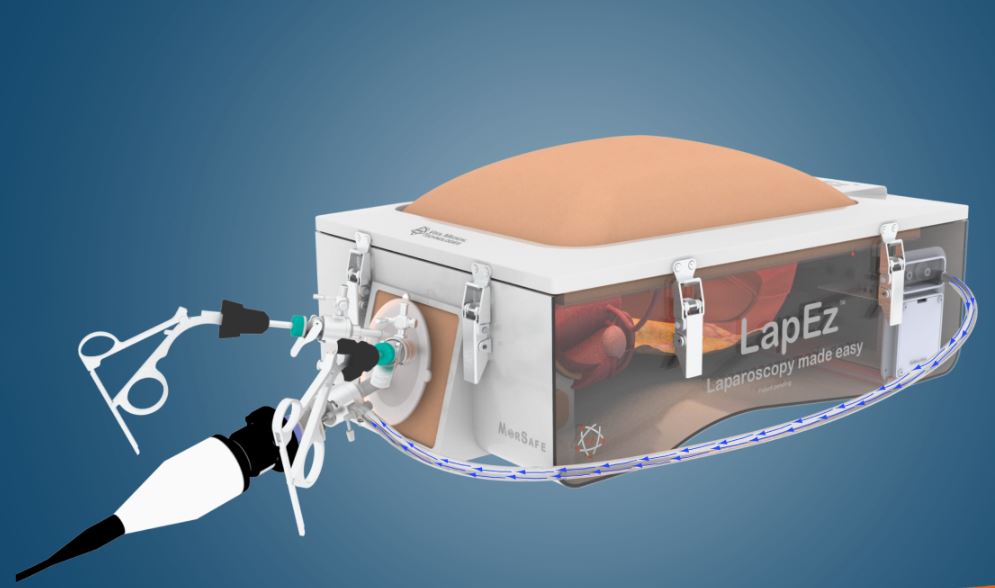Introduction
In the ever-evolving field of minimally invasive surgery, laparoscopic procedures have become the gold standard for many surgical interventions. However, mastering laparoscopic techniques requires significant training, precision, and expertise. This is where laparoscopic simulators play a crucial role. These advanced training tools allow surgeons to practice and refine their skills in a risk-free environment before performing real-life procedures.
In this guide, we will explore what a laparoscopic simulator is, its importance in surgical training, different types available, and how it enhances the overall proficiency of medical professionals.
Understanding a Laparoscopic Simulator
A laparoscopic simulator is a medical training device that mimics real-life laparoscopic surgery. It allows medical students, surgeons, and trainees to practice key surgical skills using virtual reality (VR) or physical models. These simulators recreate the conditions of a real surgical environment, helping professionals develop hand-eye coordination, depth perception, and instrument handling techniques without the risks associated with live surgeries.
Importance of Laparoscopic Simulators in Surgical Training
Laparoscopic surgery is fundamentally different from open surgery, requiring precise motor skills and control. The learning curve can be steep, making laparoscopic simulators an invaluable asset in surgical education. Here are some key reasons why these simulators are crucial:
- Risk Free Learning
- Simulators provide a safe training ground where students and professionals can practice without the fear of harming patients.
- Mistakes can be analyzed and corrected, ensuring better preparation before real surgeries.
- Enhanced Skill Development
- Surgeons can master tissue handling, instrument manipulation, and coordination in a controlled environment.
- Helps develop fine motor skills essential for complex laparoscopic procedures.
- Realistic Surgical Scenarios
- Many modern simulators integrate virtual reality and haptic feedback, offering a realistic surgical experience.
- Some models simulate complications and challenges that a surgeon might encounter in real operations.
- Cost-Effective Training
- Instead of practicing on cadavers or expensive lab setups, simulators offer a more affordable and reusable.
- Reduces hospital costs associated with training and patient safety concerns.
- Improved Confidence and Competency
- By practicing on a simulator, trainees develop confidence in their abilities before entering an operating room.
- Continuous training leads to better surgical outcomes and reduced operation times.
Types of Laparoscopic Simulators
There are different types of laparoscopic simulators, each catering to various levels of training and learning objectives. The most commonly used types include:
- Box Trainers
- These are physical models with ports for inserting laparoscopic instruments.
- They usually have a camera and monitor setup to replicate the real surgical field.
- Used for basic skills training like suturing, knot tying, and surgical instrument handling.
- Virtual Reality (VR) Simulators
- Advanced simulators that use computer-generated environments.
- Provide interactive and immersive training, often with haptic feedback.
- Offer performance assessments and real-time feedback to track progress.
- Hybrid Simulators
- Combine features of both box trainers and VR simulators.
- Allow for hands-on instrument use while integrating digital feedback.
- Provide a comprehensive training experience.
- Augmented Reality (AR) Simulators
- Use AR technology to superimpose digital elements onto physical models.
- Enhance surgical realism by merging real-world and computer-generated images.
How to Use a Laparoscopic Simulator Effectively
To make the most out of laparoscopic training system, here are some best practices:
- Follow a Structured Training Program
- Use pre-defined training modules that cover basic to advanced skills.
- Gradually progress from (such as instrument navigation) to complex surgical procedures.
- Focus on Hand-Eye Coordination
- Since laparoscopic surgery relies on indirect vision through a camera, practicing hand-eye coordination is essential.
- Training should include depth perception exercises to improve precision.
- Track and Assess Performance
- Many VR simulators provide feedback on accuracy, speed, and efficiency.
- Reviewing these metrics helps identify strengths and areas needing improvement.
- Practice Under Simulated Pressure
- Training under time constraints or simulated emergency situations can help develop real-world readiness.
- Helps prepare surgeons for handling unexpected challenges during actual surgeries.
The Future of Laparoscopic Simulators
The field of surgical simulation is evolving rapidly, with innovations like AI-driven assessment tools, robotic integration, and cloud-based learning platforms. In the future, we can expect:
- AI-assisted guidance to provide real-time suggestions and corrections.
- Remote training capabilities allow surgeons to practice from anywhere.
- Increased accessibility and affordability of advanced simulators for hospitals and medical institutions.
Conclusion
A laparoscopic simulator is a game-changing tool in surgical education, enabling medical professionals to hone their skills in a risk-free and cost-effective manner. By integrating these simulators into medical training, hospitals and institutions can ensure that surgeons are well-prepared, confident, and competent in performing minimally invasive procedures.
As technology advances, laparoscopic simulators will continue to play a vital role in shaping the future of surgical training, improving patient safety, and enhancing surgical outcomes. Whether you are a medical student, a surgical resident, or an experienced surgeon looking to refine your skills, investing time in simulator-based training can significantly boost your expertise and confidence in laparoscopic surgery.



